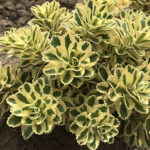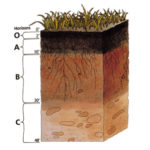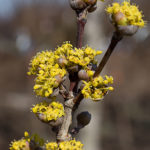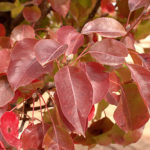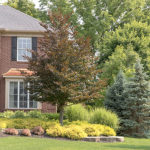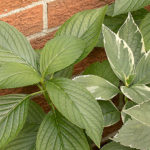Who's ready for a for a sneak peak of 2020? I have been very busy getting ready for next year, and I thought this was a perfect time to spill some of my excitement over to you. As the nursery industry moves forward, we here at Christensen’s want to move forward as well. So allow me to introduce you to some of the new stuff out there, as well as maybe a few older items that will be new to us.
(In no particular order)

Physocarpus Summer Wine® Black: Ho-Hum... just another dark leafed Nine-Bark. Nope! These guys clearly stand out and make a mark. The foliage is so much darker and slightly shiny. They stood out across 3 large nursery blocks of plants!

Thuja occidentalis Tater Tot®: The name alone makes it a must-have! I really like the look of this one. Although a dwarf (reaching 1-2’ tall) it is considered a faster grower than a 'Hetz Midget' or 'Danica'.
Pinus Mugo var. Mugo ‘Slowmound’ and ‘Enci’: Although not new to the world these will be new to us. ‘Slowmound’ will eventually reach 4’ tall, but it will take 20-40 years to do so. The ‘Enci’ (which has a normal mugo growth rate) will only reach 2-3’ tall. (As a comparison, a “Mugo” will reach about 20’ tall and P. m. ‘Pumilo will reach 5’ tall)

Sedum takesimense ‘Atlantis’: This one is getting awards from all over – so I had to sneak in what few I could this fall for some division work. I honestly don’t think there are any left as I think the employees around here now have them in their own gardens! I am on the hunt for more! It is a medium sized (6-10” tall) Sedum with incredible serrated cream variegated leaves tinged slightly pink. I am guessing it flowers but who cares.

Ilex verticillata Berry Heavy®
New Ilex verticillata? Really?? Yep! I am sorry to all the ‘Red Sprite’ aficionados but I have found a new love affair. Ilex verticillata Berry Heavy®. It is a fall and winter showstopper! Huge masses of red berries are spectacular. Also new is Ilex v. Little Goblin® Red: It has extra-large reddish orange berries on a dwarf 3-5’ tall plant. (Both can be pollinated by ‘Jim Dandy’.)

Ilex verticillata Little Goblin® Red
Andropogon gerardii ‘Blackhawks’: Another WOW! This Bluestem emerges deep green to dark purple in the late spring. As the summer progresses the grass gets darker and darker, finally ending up nearly black by fall. At about 5’ tall and very upright this grass looks best en masse. PS Did I tell you that it also has awesome red-purple flowers to sway in the breeze?

I am saving the rest for next year’s surprise!
